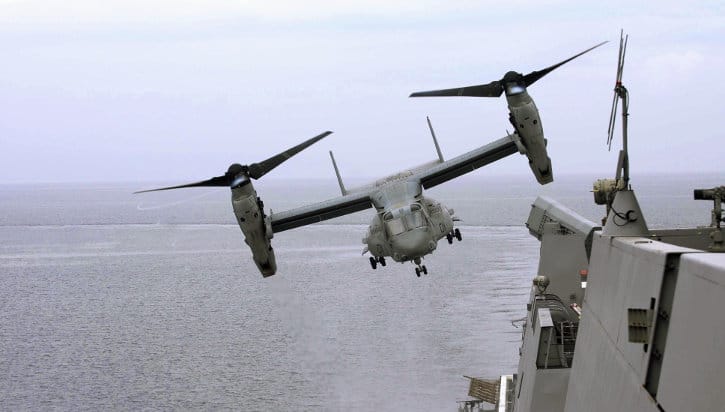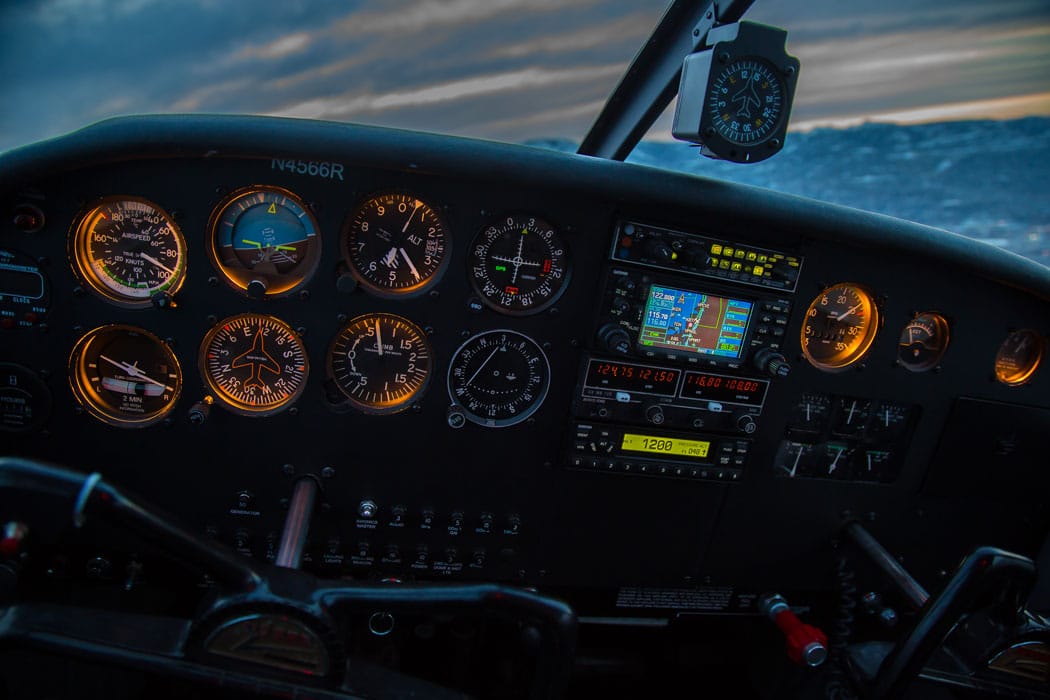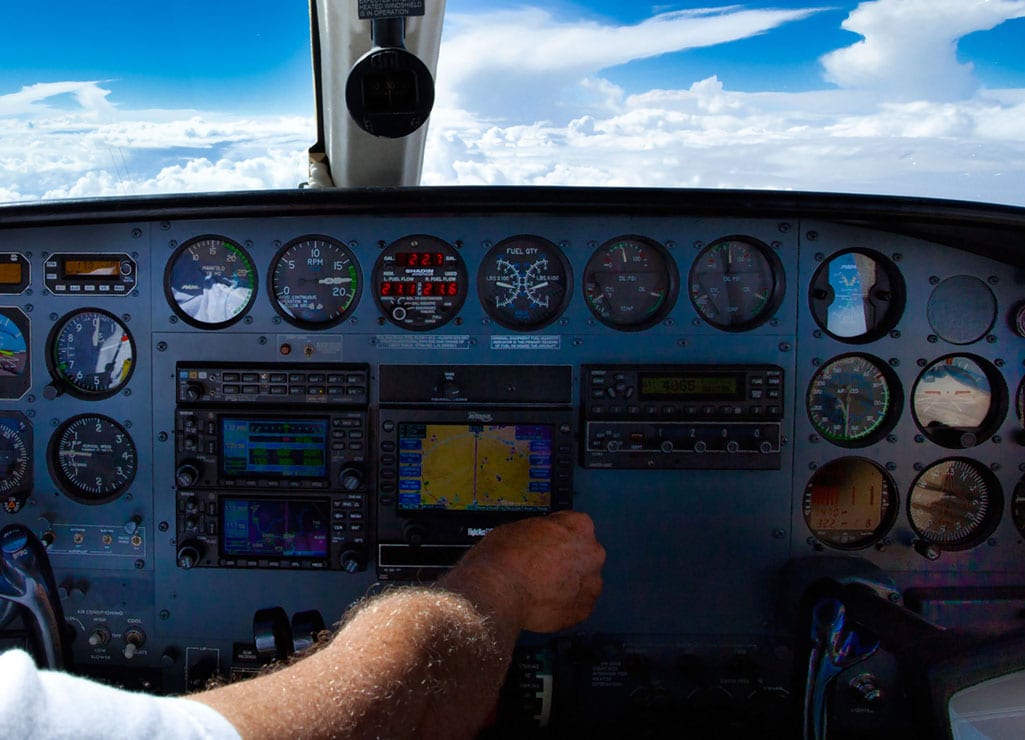A discussion of rotor wash, jet blast and wake turbulence and how to avoid them.
A moving wing, a jet engine, and a helicopter rotor: all disturb air, sometimes violently, as they do their jobs. And all create temporary wind events you really don’t need to fly through.
It’s always fun, when practicing steep turns, to bump into your own wake as you complete your 360. Yet real wake turbulence or jet blast encounters are anything but fun, and the resulting upset can exceed the roll-control authority of your aircraft. To avoid wake turbulence or jet blast, it is essential to understand where you are in relation to other aircraft in your vicinity, visualize the location of any vortex wake generated by larger aircraft, and adjust your flight path accordingly.
All aircraft generate wakes while in flight. The same pressure differential that creates lift causes air to roll behind the wing. The wake itself consists of two counter-rotating cylindrical vortices. Vortex speed is determined by the weight, speed, and wing shape of the generating aircraft, and can exceed 300 feet per second. The worst wakes are generated by aircraft that are heavy, clean, and slow. Therefore, a climbing heavy aircraft that has just raised its flaps can be thought of as the worst offender, followed by one that is landing. The Boeing 757 has an especially nasty reputation.
Wake Behavior
At cruise, you’re generally safe with a vertical separation of 1,000 feet. Airliners inbound to Burbank Airport at 3,000 MSL cross over the 2,000-ft. traffic pattern at nearby Van Nuys all the time, but in 1999 a Grumman Tiger in the pattern was struck by instantaneous severe turbulence 2-1/2 minutes after an airliner had passed overhead. He landed safely but his left wing was bent; it was later determined the airliner had crossed only 500 feet above the Grumman’s path. Perhaps his slow speed saved him; in 2006 a Piper on approach suffered an in-flight breakup caused by encountering wake turbulence while exceeding maneuvering speed.
Fortunately, trailing vortices have predictable behavior, making it easier for you to visualize where they’re going and avoid them. Vortices tend to remain spaced just less than the wingspan of the generating aircraft apart, sinking at about 300 fpm and slowing their descent as they approach the ground. With zero wind, near the ground, the vortices then move laterally away from each other at about 3 knots. The vortices will drift with a wind, however, so it helps to know wind direction and speed. For example, if you’re on approach following a big jet with a 4-knot crosswind from right to left, the left vortex of the jet might move further left and out of your way at 4+3=7 knots, while the right vortex could actually be pushed left at 4-3=1 knot, and potentially into your path. If, in this example, you are landing on a runway parallel and to the left of the preceding aircraft, you will need to worry about that left vortex rolling across your runway at 7 knots. In 1998 a student pilot was killed on short final at KSNA when his Cessna 152 entered a wake created by a 757 that had just landed on the parallel runway.
Avoidance
The way to avoid all this is to stay above the flight path of the preceding aircraft, and touch down past the point the other aircraft touches down, where you know there is no wake. However, if you are landing with a light quartering tailwind, be aware that the vortex of the preceding aircraft could be pushed ahead into your touchdown zone. If you fear this may happen and you’re running out of runway, there’s an easy solution—go around. A similar situation can present itself when landing on a runway with a displaced threshold. An aircraft can take off in front of you from the end of the runway, but you have to land beyond the displaced threshold. If you can see that you will be descending through the preceding large aircraft’s wake, it might be safer to go around and come back after the wake has dissipated. Additionally, when landing or departing from a crossing runway where large aircraft are utilizing the other runway, try to land before the intersection and otherwise stay above the other aircraft’s flight path.
As pilot-in-command, it’s up to you to make sure you’re not getting squeezed too close to the big jets on a busy day. On approach, ATC is supposed to keep small planes 5 miles away from heavy aircraft. For departure, they should allow 2 minutes or the appropriate 5-mile radar separation. This gives any vortices generated by large aircraft time to settle out of the way. But there’s no rule preventing them from launching a big jet while you’re on final for landing. It’s no problem if you land before the jet’s rotation point. But what if you’re coming in on an instrument approach in IMC? You can’t see outside, but you’re listening on the radio and visualizing the other traffic. Now the tower is going to launch a heavy while you’re on final—but what if you have to miss the approach? You’re in the clouds with a very good chance of crossing that jet’s departure path. This is something you should think about long before you reach the terminal area of a busy airport. If you find yourself in this scenario, you might consider breaking off your approach early and asking for vectors or trying the approach again when they aren’t going to launch someone right in front of you. Remember 14 CFR Section 91.3(a): “The pilot-in-command of an aircraft is directly responsible for and is the final authority as to the operation of that aircraft.”
As you approach the runway, notice the surrounding environment. Do you see a helicopter near the runway? Downwash from the main rotors generates high-velocity outwash vortices to a distance approximately three times the diameter of the rotor, so make sure you’ll be at least that far away. If not, you can just add power, climb, and sort it all out at a safe altitude. The king of rotor wash is the Osprey; these behemoths kick up dust all over the airport as they land or take off.
(Image Courtesy of Wings Over Houston)
Holding short one day in our Cessna 210 at our old home base SMO, near LAX, the day before President Bush was due for a visit, two huge military Sikorskys were cleared to land in front of us. Our plane shook so violently I feared we might flip over, but there we were, sitting ducks. We complained loudly to the tower and at least got an apology.
Another reason to be aware of what’s going on around the runway is jet blast. There’s a reason most airports that cater to jets have jet blast walls at both runway ends. If you are taxiing behind a jet, don’t tailgate—you and your airplane don’t need what’s coming out of those engines. The hot fumes create brief, substantial turbulence as they exit the engine pods horizontally and then rise through colder air. Landing at Big Bear Airport several years ago, we were nearly blown completely off the runway two seconds after touchdown. Full rudder, aileron, and power were added to recover and escape. Thinking it was a momentary crosswind, we remained in the pattern for another landing attempt, this time behind a Bonanza, which we saw blown violently across the runway. The pilot recovered and went around as well. After abandoning the approach we noticed a large Falcon with its three jet engines pointed directly at the runway and realized the jet blast had blown both of us across the runway. We had mistakenly thought the aircraft was simply parked. It’s a mistake we won’t make again.
(Featured image courtesy of Mike Todd)
















Leave a Reply